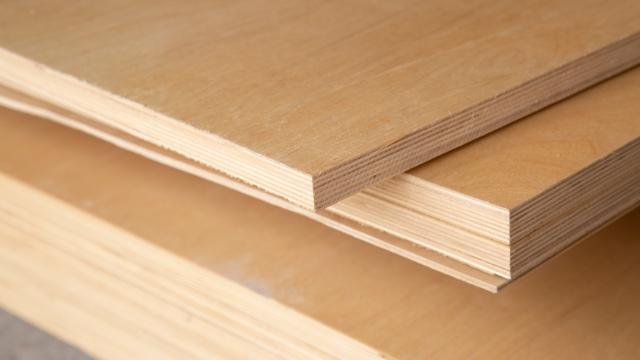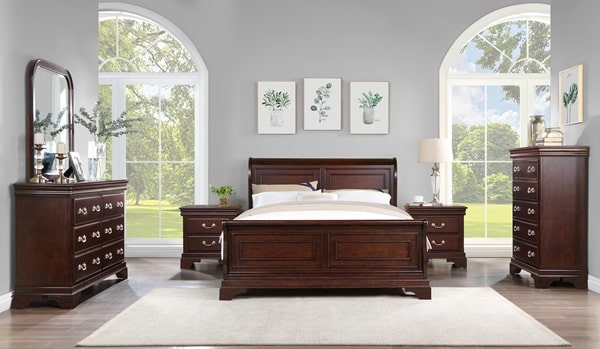We get a lot of questions to check the difference between plywood and solid wood. The thing is that the plywood and the solid wood are different, and they have their places. They should not be used interchangeably. We will help you define the use case for plywood and solid wood based on their pros and cons. In the section below, we have shared all the relevant information. Let us go ahead and check it out now.
What is Solid Wood?
Solid wood is manufactured by cutting the raw wood into slabs. The wood is dried, and the moisture content is reduced before it is ready for use. The main idea behind drying the wood is to improve the strength and stability of the timber. Solid wood can experience shrinkage or expansion depending on the humidity levels and the temperature. Solid wood is available in two types, and these are known as softwood and hardwood.
Advantages of Solid Wood
- Appearance – Solid wood is considered to be timeless. The design and the appearance of the solid wood are very appealing. People prefer solid wood because of its aesthetics, rightly so, as it looks very royal. If the appearance of the furniture is your priority, then you can opt for solid wood.
- Construction Activities – Since solid wood is very durable and sturdy, it is often used in construction activities. It is a popular choice for designing beams as it supports the structure very well. Solid wood is also used for making door frames.
- Easy to Maintain – Maintaining solid wood is the easiest part. You can easily maintain the solid wood by polishing or coating it with varnish once every 2-3 years. This is the least expensive material to maintain, and at the same time, it offers great durability.
- Stability – The stability of the solid wood is very high. This is why it is preferred where high load-bearing capacity is needed. If you are looking for something durable, stable and sturdy, solid wood should be your choice.
- Versatility – You will be surprised by the places at which solid wood can be used. You can use it for construction, interior work, and furniture-making. Since it is very versatile, it is a preferred choice of the people.
Disadvantages of Solid Wood
- Availability – The availability of solid wood is subjective. You may not find the desired material or desired size. So, this can be a concern while you are using solid wood, and it should be checked before you start a project.
- Expensive – As a matter of fact, solid wood is more expensive than plywood. So, if cost is a factor for you, you should restrict to lower-grade plywood. Otherwise, you can also use solid wood.
What is Plywood?
Plywood is different from solid wood. Plywood is manufactured by glueing the layers of solid wood together to reach a desired thickness. In each layer, the direction of the grain is angled at 90 degrees to give it better strength and stability. Plywood is available in a range of thicknesses, and it is available in standard sheet sizes. There is a specific grading system in plywood, and it depends on multiple factors.
Advantages of Plywood
- Affordable – Plywood is available in different grades, and some are very affordable. So, if you are looking at a pocket-friendly project, you can opt for plywood over solid wood. It can make a huge difference in the cost.
- Availability – The availability of Plywood is much better than solid wood. You can find plywood in multiple grades, and since the sheet size is standard, you won’t have to worry about finding the right size.
- Large Variety – There is a huge variety available in grade and quality. Depending on the budget and the quality, you can choose the grading. This can help you contain the project cost while meeting the standard purpose.
- Water Resistant – Many waterproof and water-resistant plywood is available in the market. If you are making outdoor furniture or something constantly exposed to weather conditions, you can opt for waterproof options.
- Wide Slabs Available – The slabs of plywood are wide, which is not possible when buying solid wood. So, if you would like to make a tabletop with a single piece, you can opt for plywood over solid wood.
Disadvantages of Plywood
- Lower Durability – The durability of solid wood is certainly lower than that of solid wood. Solid wood is made of a single piece of wood where the grains are interlocked by nature. In comparison, there is an extensive use of glue while making plywood.
- Quality Control – You may have to get some knowledge before deciding which quality of plywood you can choose. The lower grades may not be as durable, and the higher grades can be more expensive than solid wood.
Final Take
When it comes to strength, solid wood is certainly better than plywood. The glued layers are always a weak point when it comes to humid climates. Moreover, solid wood is considered to be better looking. You can maintain solid wood by simply polishing and varnishing it. In addition, plywood may offer you a cost advantage, and it is also easy to work with since it is available in standard size. You can choose between the two options depending on the pros and cons we have shared on this page.


